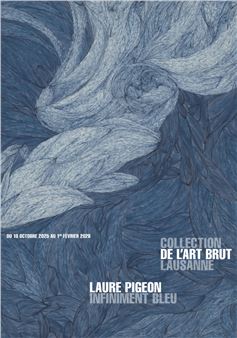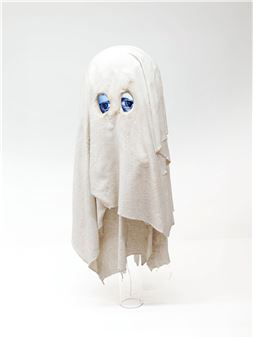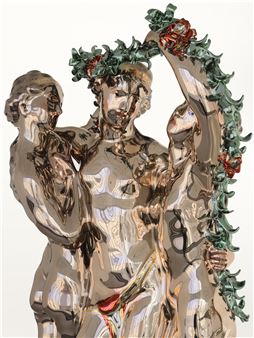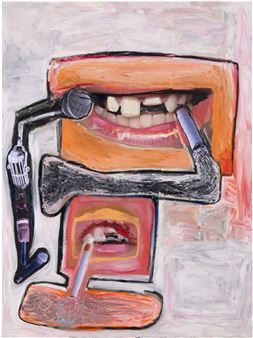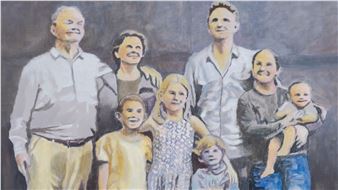Carlos Villa and Leo Valledor: Drawings
This exhibition at Silverlens New York marks the first presentation devoted to the drawings of Carlos Villa and Leo Valledor. Long known for their monumental paintings, here the artists work up close. On paper, their ideas are immediate and unguarded, holding the DNA of their major works while making their kinship plain: two artists for whom artmaking was a form of thinking, and where experimentation was the real subject. A few master paintings accompany the works, extending that dialogue and pairing the iconic with the intimate.
Villa and Valledor belong to a generation of Filipino and Filipino American modernists that expanded what modernism could hold, alongside Pacita Abad, Imelda Cajipe Endaya, and Santiago Bose. For Villa, that meant ancestry and ritual. For Valledor, color as space.
They grew up in the same diasporic community in San Francisco, affectionately called each other ÔÇ£cousinsÔÇØ, and stayed lifelong friends, whose dialogue shaped their art. In the 1960s they packed up and moved to New York. Downtown, Valledor co-founded the historic Park Place Gallery, a short-lived but legendary artist collective and exhibition space that defined geometric abstraction and new concepts of space. For Valledor, an artist of color marginalized in 1960s America, New York gave his ideas air; he found a community that welcomed risk and the freedom to push color and form into the beyond. VillaÔÇÖs drawings from this same period, made in New York and among the only works to survive from the 1960s, hold the same sense of possibility, poised at the edge of the explosion that would define his mature work. Showing them in New York again restores a missing piece of that history.
For both artists, drawing was not preparatory but generative, a complete act in itself. ValledorÔÇÖs works show his architectural precision. Many are on graph paper, the faint grid acting as scaffold and rhythm. Using pencil and felt-tip marker, he found a beating tempo between order and improvisation, echoing the jazz that kept him moving. Some shapes fill with dissolving gradients and dotted passages that drift like little confetti rivers, revealing a quiet kinship with his beloved cousin, Villa.
Meanwhile, VillaÔÇÖs most recognizable motif, the coiling ÔÇ£slinkyÔÇØ form, appears throughout the drawings in looping technicolor lines. What first looks like a simple spiral becomes a charged ribbon of energy, ancestry, and motion. The form rolls through nearly every of his major works of the 1970s, his most iconic decade. It shows up in his seminal Tat2 self-portraits, his ceremonial capes, and his mixed-media paintings as a personal glyph. In the ballpoint drawings and rare centripetal compositions, the line tightens, graphic and precise, unexpectedly echoing ValledorÔÇÖs discipline.
Though their mature works diverged sharply, on paper their kinship becomes clear. Freed from material weight, the drawings catch thought in motion.
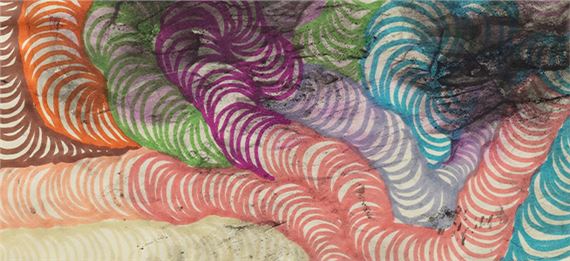
Recommended for you
This exhibition at Silverlens New York marks the first presentation devoted to the drawings of Carlos Villa and Leo Valledor. Long known for their monumental paintings, here the artists work up close. On paper, their ideas are immediate and unguarded, holding the DNA of their major works while making their kinship plain: two artists for whom artmaking was a form of thinking, and where experimentation was the real subject. A few master paintings accompany the works, extending that dialogue and pairing the iconic with the intimate.
Villa and Valledor belong to a generation of Filipino and Filipino American modernists that expanded what modernism could hold, alongside Pacita Abad, Imelda Cajipe Endaya, and Santiago Bose. For Villa, that meant ancestry and ritual. For Valledor, color as space.
They grew up in the same diasporic community in San Francisco, affectionately called each other ÔÇ£cousinsÔÇØ, and stayed lifelong friends, whose dialogue shaped their art. In the 1960s they packed up and moved to New York. Downtown, Valledor co-founded the historic Park Place Gallery, a short-lived but legendary artist collective and exhibition space that defined geometric abstraction and new concepts of space. For Valledor, an artist of color marginalized in 1960s America, New York gave his ideas air; he found a community that welcomed risk and the freedom to push color and form into the beyond. VillaÔÇÖs drawings from this same period, made in New York and among the only works to survive from the 1960s, hold the same sense of possibility, poised at the edge of the explosion that would define his mature work. Showing them in New York again restores a missing piece of that history.
For both artists, drawing was not preparatory but generative, a complete act in itself. ValledorÔÇÖs works show his architectural precision. Many are on graph paper, the faint grid acting as scaffold and rhythm. Using pencil and felt-tip marker, he found a beating tempo between order and improvisation, echoing the jazz that kept him moving. Some shapes fill with dissolving gradients and dotted passages that drift like little confetti rivers, revealing a quiet kinship with his beloved cousin, Villa.
Meanwhile, VillaÔÇÖs most recognizable motif, the coiling ÔÇ£slinkyÔÇØ form, appears throughout the drawings in looping technicolor lines. What first looks like a simple spiral becomes a charged ribbon of energy, ancestry, and motion. The form rolls through nearly every of his major works of the 1970s, his most iconic decade. It shows up in his seminal Tat2 self-portraits, his ceremonial capes, and his mixed-media paintings as a personal glyph. In the ballpoint drawings and rare centripetal compositions, the line tightens, graphic and precise, unexpectedly echoing ValledorÔÇÖs discipline.
Though their mature works diverged sharply, on paper their kinship becomes clear. Freed from material weight, the drawings catch thought in motion.

 ARTISTS
ARTISTS










